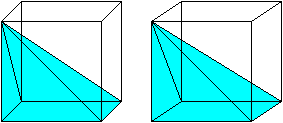The ancient result is that a right-circular cone of height $h$ and base-radius $r$ will have volume $\frac{1}{3} \pi r^2h$, which is $1/3$ the volume of the cylinder with same base and height. And the same is true if you start with a square-based pyramid: it's volume will be $1/3$ the volume of the rectangular prism that it lives in. Here's a relevant MathSE question for that.
What is the most general statement of this fact that we currently know to be true?
Thinking of the locally two-dimensional case, I'm pretty sure that this fact still holds if you start with any "nice" bounded planar region, build a generalized cylinder with bases and cross-sections congruent to that region, then take any point on a base of that cylinder as the apex of your cone. And then this generalizes even further due to Cavalieri's principle. But is this true? And in what generality is is true? Like, what conditions must we have on our base region? Furthermore, is there a version of this in higher dimensional spaces? Is there a version of this in spaces that are not $\mathbb{R}^n$?


Best Answer
The $n$-dimensional prism still has volume formula $$V_n=V_{n-1}\cdot h$$ while the $n$-dimensional pyramid has volume formula $$V_n=\frac1n\cdot V_{n-1}\cdot h$$ where $V_{n-1}$ is the $(n-1)$-dimensional volume of the base facet and $h$ is the orthogonal height.
For $n=1$ you'd simply use $V_0=1$ and you see that $V_1=h$ in either formula. The case $n=2$ also is easy by planar geometry, and $n=3$ was the starting point of your question $-$ and as such admitted to be correct either.
A visualization of the idea on how this generalizes for instance is outlined here, by dissecting the according $n$-dimensional hypercube by its body diagonal into $n$ copies of a pyramid on a $(n-1)$-dimensional hypercube (q.e. a facet of the former).
--- rk